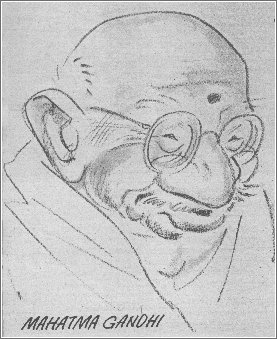Who, What, When, Where, Why, and How Inclusive Leaders make those in a minority feel that they belong?
Who, What, When, Where,
Why, and How Inclusive Leaders make those in a minority feel that they belong?
By Jiten Patel (2020)
Having been in the field of equality diversity and
inclusion for over 20 years and having worked alongside renowned experts, I
have learned that a compliance approach may bring about equality, and diversity
can create the potential for exceptional performance. It is only when we embrace inclusion as a fundamental leadership
competence that we fully drive excellence for the individual, the team, and the
organisation. My 6w Inclusive Leadership framework helps individuals to
come into their own as inclusive leaders. You may have counted only 5
‘Ws’. Trainers, facilitators, and many others will recognise that the
sixth one appears at the end of the word…How.
Why:
Perhaps
the starting point really needs to be the ‘Why’ rather than the ‘Who’ in this
title. It goes, almost without saying, that the practising inclusion is
the right thing to do. In moving from a mono-cultural to a culturally
diverse status, organisations can only yield the widely identified benefits of
a diverse workforce when all the diverse
individuals (including our stereotypical white middle class men) in its
workplace feel a genuine sense of belonging. I reference culture, here, in
its broadest sense. Think about a time when you felt or were made to feel out
of place and perhaps that you did not fit in. Were you able to feel you
could be yourself and that you could give your best at that time?
What:
There are
many theories about what constitutes an inclusive leader. For me, at its
core, an inclusive leader is someone who understands what makes different
people tick. They apply the principles of emotional intelligence to adapt
their approach to reach others, making them both visible and valued. This
then makes the other feel they have been acknowledged, that they matter and,
more importantly, that they belong. When a
person feels this sense of belongingness, they are more self-confident and
bring out the best in themselves. This allows greater creativity and
innovation within the team and the organisation. It truly develops
the concept of the learning organisation and moves away from an organisational
blame culture.
When:
Conscious
inclusion is a continual process. One-off initiatives are a good starting point
but do not provide consistent and sustainable results. I am reminded of an
anecdote about a disciple and his spiritual teacher. The disciple observed
that, every day, the master would sit down and polish a copper pot. His
curiosity finally got the better of him and, one day, he asked, “Master, why do
you continue to polish the pot every day when it is so shiny. The teacher
gave him the copper pot, asked him to keep it in a cupboard and then bring it
back to her in 6 months. The disciple duly brought back the pot in 6
months and presented it to the master. The master asked the disciple what
he noticed about the pot when compared to an identical pot the master had been
polishing every day for the past 6 months. The disciple had a paradigm
shift seeing the impact of neglect on the pot left in the cupboard; it had lost
all its lustre and did not gleam like the other one which the master had been
polishing each day for the past 6 months.
Where:
Consciously
inclusive leaders take every opportunity to provide support and
inspiration. This can be done in board meetings, in one to one session, in
keynote addresses, in regular communications, in team meetings, etc. They
do this both internally within their organisation and externally amongst peers,
at conferences, and in publications amid other places. In short, consciously
inclusive leadership can be practised everywhere and integrated into everything
we do.
How:
A
consciously inclusive leader engenders the feeling in minorities that they
belong through a variety of ways. One of the most effective ways is by
engaging with people who are different to them. It could be as simple
regular attendance at meetings organised by staff affinity groups/diversity
networks. This allows the inclusive leader to build up a repertoire of the
lived experiences of people. In turn, it allows the leader to counteract
the effect of inherent biases which we have integrated through years of
conditioning grounded in negative stereotypes and fear mongering.
Who:
Inclusive
Leadership is everyone’s responsibility. However, it needs to be practised
and role modelled by our senior leaders, especially the C Suite. Custom
and practice have demonstrated, time and again, that managers (often
unconsciously) emulate their bosses. Creating a culture of inclusion
cannot be left to the Head of Equality, Diversity and Inclusion
alone. That post holder can provide a lead on strategic positioning and
operational implementation; execution, to be effective, has to be delivered
top-down.
Inclusion is a competency which, to be developed,
needs to be practised consciously and persistently until it becomes an
unconscious competence, functioning automatically, overriding inherent
biases.




Comments
Post a Comment